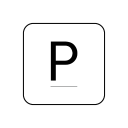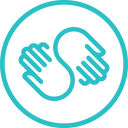On How I Started My Own Graphic Design Company
Hello! My name is Rachel Nedrud, graphic designer and founder of Freeline Creative, LLC. based out of beautiful Colorado. Freeline Creative is a design company eager to help businesses grow and tell their stories through strong visuals and branding. I specialize in custom design for businesses, with work ranging from logo and product design to marketing collateral, merchandise and more. Every project is met with a standard of message clarity, consistency and adaptability, and passion for visual storytelling.
I started Freeline Creative on February 2018 with one account, a local craft brewery who hired me for their entire product line design and event branding. I owe so much of my success to them as they were truly the catalyst for not only the launch of Freeline Creative but for me believing I was good enough. Self-doubt is real and sometimes it just takes one person believing in you to shift that perspective! Take that as a lesson to lift each other up rather than assume they know their value. You never know the transformative power your words and actions can have. Here we are a short 19 months later and my clientele has grown to nearly 40, several of whom are ongoing based on their business needs. This is huge considering I’m a one-man-band. I just surpassed my 2018...

Download the report and join our email newsletter packed with business ideas and money-making opportunities, backed by real-life case studies.

Download the report and join our email newsletter packed with business ideas and money-making opportunities, backed by real-life case studies.

Download the report and join our email newsletter packed with business ideas and money-making opportunities, backed by real-life case studies.

Download the report and join our email newsletter packed with business ideas and money-making opportunities, backed by real-life case studies.

Download the report and join our email newsletter packed with business ideas and money-making opportunities, backed by real-life case studies.

Download the report and join our email newsletter packed with business ideas and money-making opportunities, backed by real-life case studies.

Download the report and join our email newsletter packed with business ideas and money-making opportunities, backed by real-life case studies.

Download the report and join our email newsletter packed with business ideas and money-making opportunities, backed by real-life case studies.














